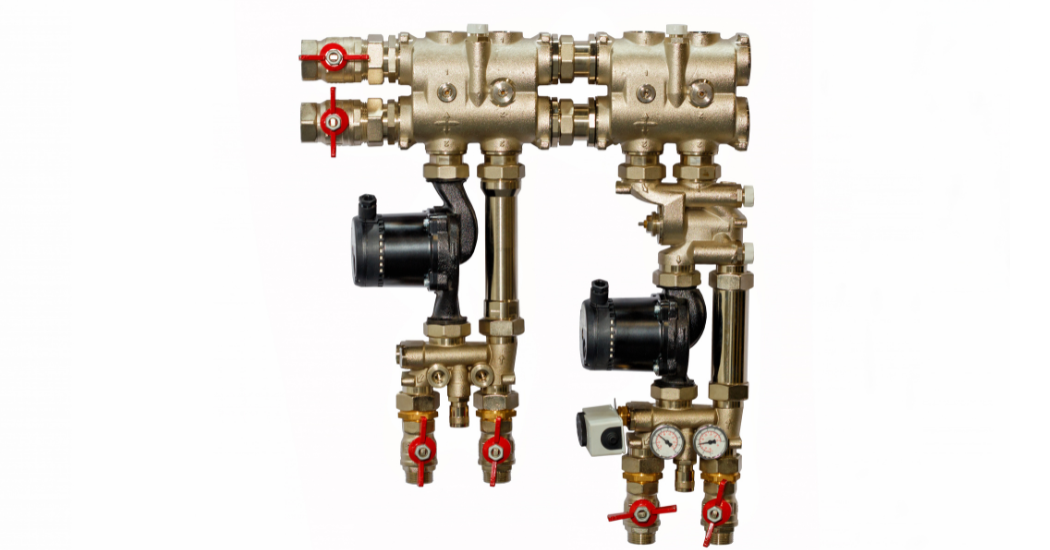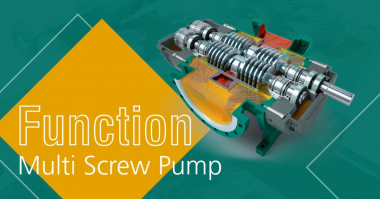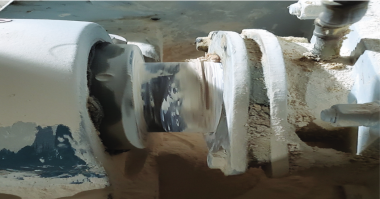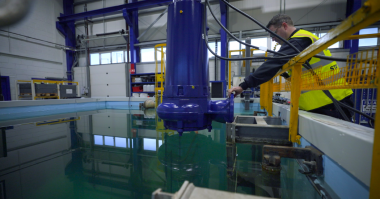Many pumps operate well below their maximum efficiency, but this can be improved with a few easy fixes. The causes of poor performance can easily go unnoticed, so measuring productivity is crucial. It may be easier than you think to test and improve pump efficiency by addressing the most common problems.
How to Measure Pump Efficiency
The first step in measuring pump efficiency is to obtain the performance curve. The manufacturer is usually responsible for providing this, so you may need to contact customer service if one was not offered at installation. The performance curve shows the expected efficiency of a certain pump. It acts as a benchmark for measuring performance against.
There are a few ways to test pump efficiency once this data is obtained. For example, there is a mathematical formula for calculating capabilities, given a few known values. You need the required fluid flow rate, pumphead, specific gravity and power input for this calculation. The result can serve as a starting point or estimate for efficiency.
The Hydraulic Institute is a great resource for industrial pump testing. The Institute maintains national standards for testing pump efficiency and updates them every few years. Standard HI 40.6 outlines processes approved by the U.S. Department of Energy.
There are a few red flags to be aware of when testing pump efficiency. For example, oversized pumps are a common cause of wasted energy. They draw more power than is needed for the amount of fluid being handled. This creates a net energy loss that can cost thousands of dollars.
Similarly, the pump’s interior can significantly impact efficiency. When the coatings wear down, the pump loses its smooth finish inside. The increased friction and particulate debris impede flow, reducing productivity. Interior wear can be particularly dangerous because it can easily go unnoticed for extended periods.
How to Improve Pump Efficiency
If you finished testing only to find that it came in well below the expected 70%, don’t worry. There are some key strategies you can use to improve pump efficiency.
A great place to start is addressing physical wear and tear to the pump. A simple visual inspection should reveal potential corrosion or rust problems before running efficiency tests. Unfortunately, when pump components are worn down beyond a certain point, they need to be replaced.
The best way to prevent future corrosion is with high-quality surface coatings inside and out. There are three main types of pipe coatings: solvent-borne, water-borne and UV. Solvent-borne and UV coatings are great options for preventing corrosion, although UVs are usually more expensive.
A good protective coating will pay off in the long run through the energy savings of a more efficient pump. Make sure you choose the right coating application method for your pump’s material. Powder and electroplating are options —powder coating offers good resistance to chipping and corrosion.
You may need to address sizing issues before investing in a protective coating for the pump. If the cause of poor performance is an oversized pump, you will need to either replace or refurbish it to improve efficiency. You can use a variable frequency drive to make the existing pump more energy-efficient if adding a correctly sized one isn’t an option.
A variable frequency drive can adapt the speed of the pump to minimize energy usage. This can cancel out the excess power draw of an oversized pump. VFDs rapidly reduce power consumption compared to speed and flow. A pump could operate at 80% speed and flow while only drawing about 50% of its maximum horsepower. A VFD is a great way to give oversized pumps an efficiency boost without making a full replacement.
How to Test and Improve Pump Efficiency
Monitoring pump efficiency is crucial to ensure you get the best results possible. Poor efficiency can lead to excessive energy costs and potentially pose quality problems. Addressing these problems can maximize productivity, reduce power consumption and boost performance.





Comments